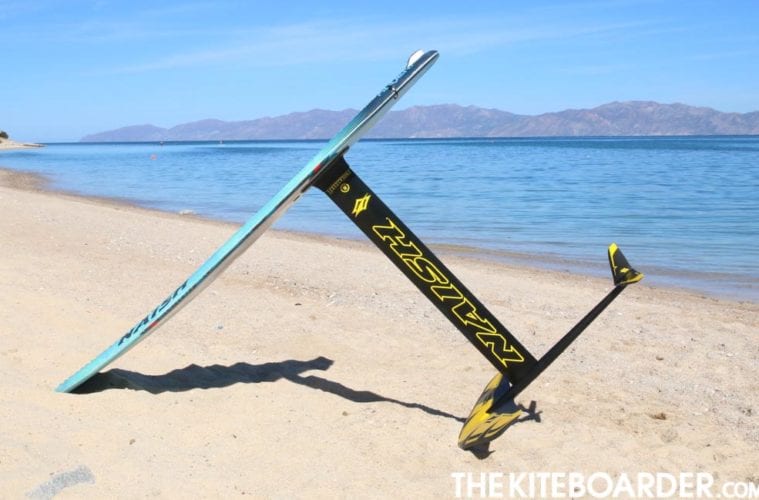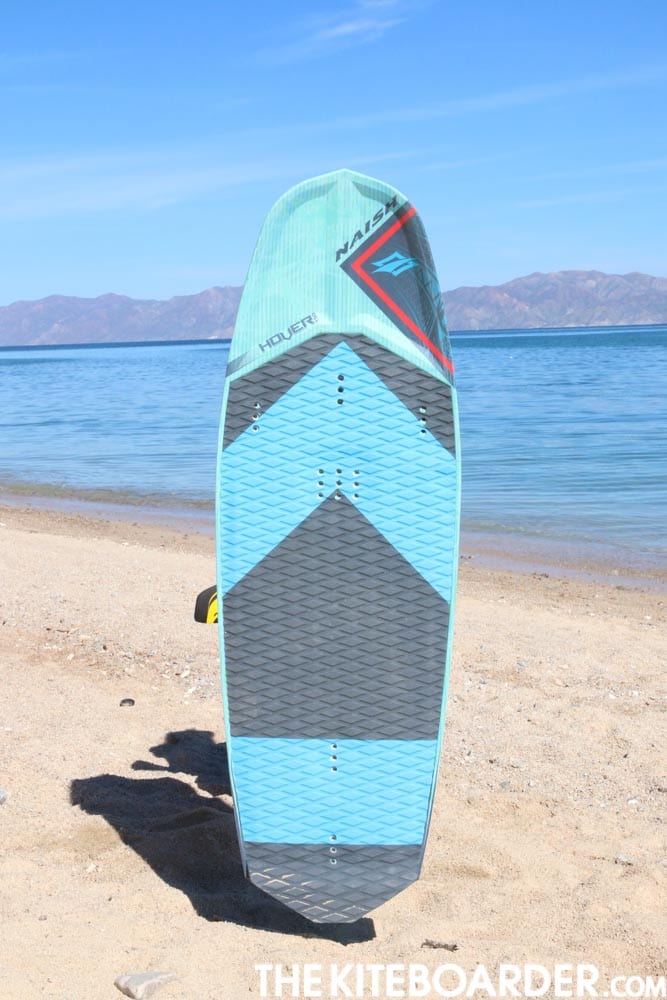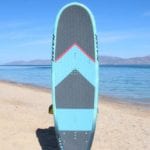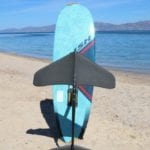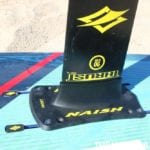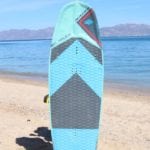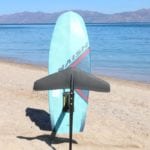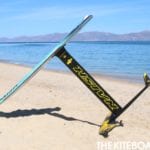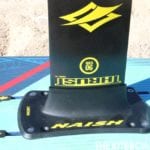Sizes Available: 112 x 45.8cm, 130 x 42cm, 138 x 42cm, 155 x 56cm, 160 x 48cm
Sizes Tested: 130 x 42cm, 160 x 48cm
Naish Says:
Have you tried to ride segways? fun right? but did you know that it is also fun to ride a hover? The Hover 130 foil board is the perfect way to take your foiling to the next level. A flat midsection with rounded edges delivers early and forgiving planing to assist with launching. The nose section””transferring into a V-bottom and pulled-up nose””reduces the potential to pearl when touching down.
Vist for more info: www.naishkites.com/product/hover-130
Whether just getting started or looking to take your foiling to the next level, the Hover 160 foilboard is a fantastic and forgiving choice for gliding above the water. Featuring a PU foam core, fiberglass and topsheet construction, the Hover 160 is incredibly durable. Its flat rocker line, rounded edges and generous buoyancy translate to early and forgiving planing. Nice and wide, with plenty of volume, the Hover 160 offers a hefty sweet spot and great stability. Drastically limiting the potential to nose dive, the Hover 160 is the “ace up your sleeve”. Master the art of foiling with the durable and easy-to-use Hover 160.
Visit for more info: www.naishkites.com/product/hover-160
Tkb Says:
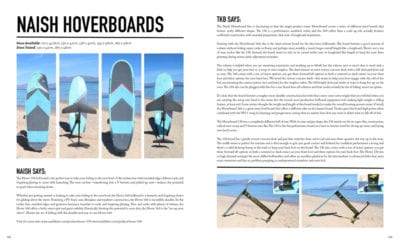 The Naish Hoverboard line is fascinating in that the single product name ‘Hoverboard’ covers a series of different sized boards that feature vastly different shapes. The 130 is a performance sandwich wafer, and the 160 rather than a scale-up job, actually features surfboard construction with rounded proportions that reek of longboard inspiration.
The Naish Hoverboard line is fascinating in that the single product name ‘Hoverboard’ covers a series of different sized boards that feature vastly different shapes. The 130 is a performance sandwich wafer, and the 160 rather than a scale-up job, actually features surfboard construction with rounded proportions that reek of longboard inspiration.
Starting with the Hoverboard 160, this is the ideal entrant board for the first time foilboarder. The board features a good amount of volume without feeling super corky or floaty, and perhaps more notably, a much longer overall length like a longboard. There’s not a ton of nose rocker like the 130. Instead, the board seems to rely on its casual rocker over its longboard like length to keep the nose from planting during minor pitch adjustment mistakes.
The volume is helpful when you are mastering waterstarts and working up to liftoff, but the volume isn’t so much that it won’t sink a little to help you get your foot in a strap or start strapless. The deck feature an inset reverse concave deck with a full deck pad from tail to nose. The 160 comes with a ton of insert options: you get three forward/aft options in both a centered or duck stance on your front foot and three options for your back foot. We loved the reverse concave deck””this tends to help your foot engage with the roll of the foil, accentuating the contact points, toes and heel, for the strapless riders. The full length deck pad made us want to hang five up on the nose. The 160 also can be plugged with fins for a one board does all solution and that could certainly be fun if foiling wasn’t an option.
It’s clear that the board features a tougher more durable construction, but with that comes some extra weight that you will feel when you are carrying the setup over land to the water (for the record, most production foilboard equipment isn’t making light weight a selling feature, at least yet). Some testers thought the weight and length of this board tended to make the overall learning process easier. Overall, the Hoverboard 160 is a great entry level board that offers a different take on the learner board. Testers gave this board high praise when combined with the WS 1 wing for learning and progression, noting that no matter how slow you went it didn’t want to fall off of foil.
The Hoverboard 130 was a completely different ball of wax. With its own unique shape, the 130 stands out for its super thin construction, radical nose scoop and V-bottom into flat. The 130 is the fun performance board you want in heavier wind for slicing up waves and laying into hard carves.
The 130 board has a gentle reverse concave deck and pad that stretches from rail to rail and runs three-quarters the way up to the nose. The waffle weave is perfect for traction and is thin enough to give you good contact and feeback for confident performance carving and there’s a solid kickstop bump at the back to keep your back foot on the board. The 130 also comes with a ton of insert options: you get three forward/aft options in both a centered or duck stance on your front foot and three options for your back foot. The Hover 130 was in high demand amongst the more skilled foilboarders and offers an excellent platform for the intermediate to advanced foiler that owns every waterstart and has no problem pumping in underpowered situations and onto foil.
Want more gear reviews all in one place? Read detailed and objective reviews on the 30 kite models and 33 board models that Tkb and freeride testers reviewed for the 2018 Freeride Gear Review Guide.


